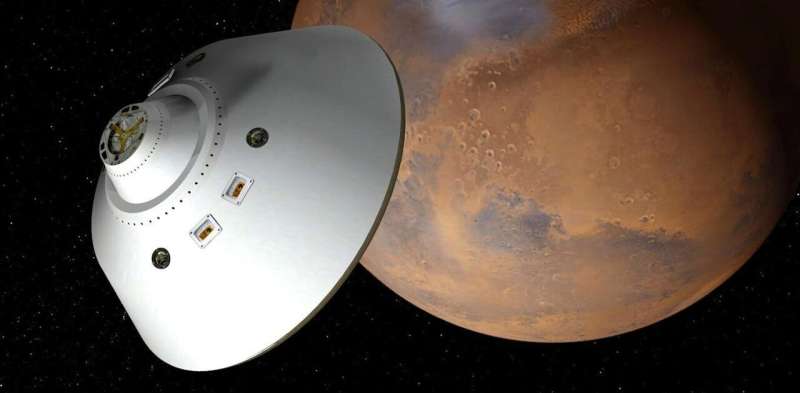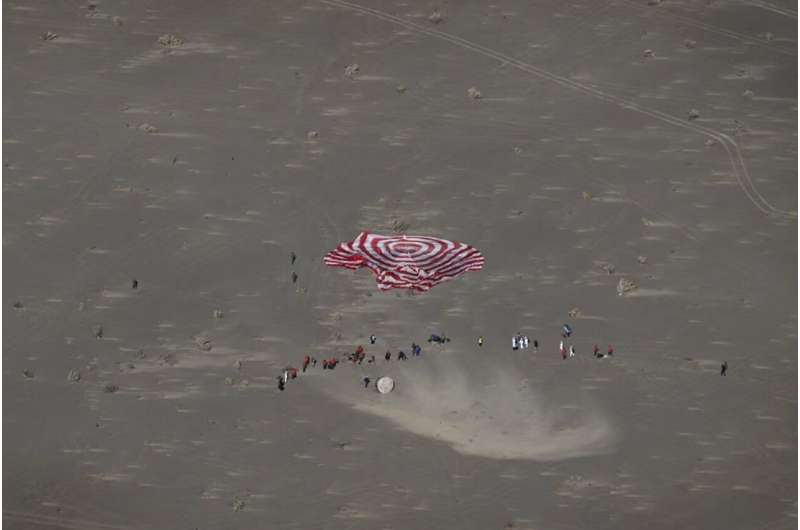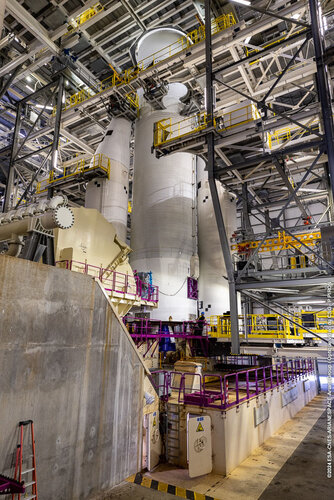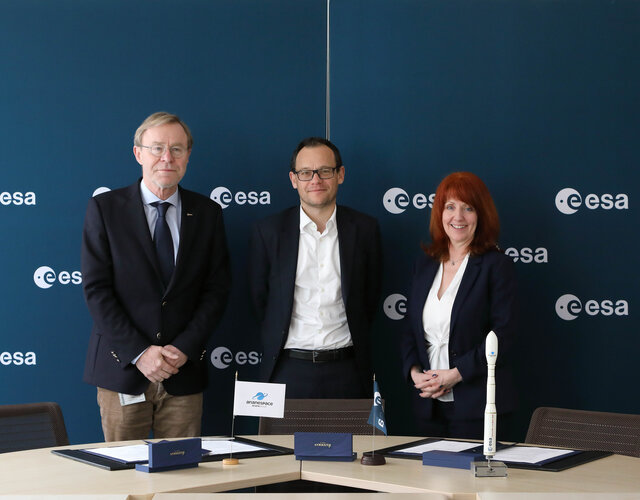
Copernical Team
NASA/JAXA XRISM mission reveals cosmic secrets with minimal pixels
 Despite most phone cameras possessing millions of pixels, the XRISM (X-ray Imaging and Spectroscopy Mission) satellite uses just 36 pixels in its Resolve instrument to capture critical scientific data.
"That may sound impossible, but it's actually true," said Richard Kelley, the U.S. principal investigator for XRISM at NASA's Goddard Space Flight Center in Greenbelt, Maryland. "The Resolve
Despite most phone cameras possessing millions of pixels, the XRISM (X-ray Imaging and Spectroscopy Mission) satellite uses just 36 pixels in its Resolve instrument to capture critical scientific data.
"That may sound impossible, but it's actually true," said Richard Kelley, the U.S. principal investigator for XRISM at NASA's Goddard Space Flight Center in Greenbelt, Maryland. "The Resolve Vega-C slated to carry ESA's solar wind explorer mission Smile
 The European Space Agency (ESA) has secured a Vega-C rocket for the launch of its Smile mission, a collaborative venture with the Chinese Academy of Sciences aimed at exploring solar wind dynamics.
The Smile mission, standing for 'Solar wind Magnetosphere Ionosphere Link Explorer', is designed to enhance our understanding of solar and terrestrial interactions, representing a significant Eu
The European Space Agency (ESA) has secured a Vega-C rocket for the launch of its Smile mission, a collaborative venture with the Chinese Academy of Sciences aimed at exploring solar wind dynamics.
The Smile mission, standing for 'Solar wind Magnetosphere Ionosphere Link Explorer', is designed to enhance our understanding of solar and terrestrial interactions, representing a significant Eu Nightside clouds reveal new insights on giant exoplanet Wasp-43b
 NYU Abu Dhabi researchers at the Center for Astrophysics and Space Science, including Research Scientist Jasmina Blecic and Associate Professor Ian Dobbs-Dixon, have utilized NASA's James Webb Space Telescope to study the climate of WASP-43b, a Jupiter-sized exoplanet. Their findings, published in Nature Astronomy, unveil the first observation of thick, dust-like clouds on the planet's nightside
NYU Abu Dhabi researchers at the Center for Astrophysics and Space Science, including Research Scientist Jasmina Blecic and Associate Professor Ian Dobbs-Dixon, have utilized NASA's James Webb Space Telescope to study the climate of WASP-43b, a Jupiter-sized exoplanet. Their findings, published in Nature Astronomy, unveil the first observation of thick, dust-like clouds on the planet's nightside Australian Government backs Space Machines Company in joint India mission to combat space debris
 Space Machines Company, a leading Australian in-space servicing firm, today announced Space MAITRI, a joint industry-led Australian-Indian mission to demonstrate progress towards space debris management and a sustainable space future.
The Space MAITRI project, funded by an $8.5 million grant from the Australian Government through the Australian Space Agency, is part of the International Sp
Space Machines Company, a leading Australian in-space servicing firm, today announced Space MAITRI, a joint industry-led Australian-Indian mission to demonstrate progress towards space debris management and a sustainable space future.
The Space MAITRI project, funded by an $8.5 million grant from the Australian Government through the Australian Space Agency, is part of the International Sp NASA's Mars Sample Return mission is in trouble—but it's a vital step to sending humans to the red planet

NASA recently asked the scientific community to help come up with innovative ideas for ways to carry out its Mars Sample Return (MSR) mission. This was in response to a report by an independent board that deemed that its US$11 billion (£8.7 billion) price tag was too expensive and its 2040 timeline too far in the future.
In brief, the ambitious plan was to collect rock samples cached inside containers by NASA's Perseverance rover and deliver them to laboratories on Earth. Perseverance has been exploring Mars' Jezero Crater, thought to have once hosted an ancient lake, since 2021. The mission would deliver the samples by sending a lander that carries a rocket (NASA's Sample Retrieval Lander) down to the surface of Mars.
Perseverance would then deliver the cached rock samples to the lander, with small drone helicopters delivered on the lander as a back up. Perseverance's samples would then be launched into Mars' orbit using the lander's rocket. A spacecraft already in Martian orbit, the Earth Return Orbiter, would then intercept these samples and deliver them to Earth.
Chinese astronauts return to earth after six months in space

Ariane 6 gets its wings
 Image:
Ariane 6's boosters are connected to the rocket's central core
Image:
Ariane 6's boosters are connected to the rocket's central core Smiles all round: Vega-C to launch ESA solar wind mission

ESA ensures a ride into space for its Smile mission, with Arianespace signing up to launch the spacecraft on a Vega-C rocket
Galileo satellite constellation expands with two new additions
 The Galileo navigation system has expanded its constellation with the addition of two new satellites, launched early on Sunday, 28 April, at 01:34 BST/02:34 CEST. This latest expansion brings the total to 30 satellites, enhancing Galileo's capabilities in terms of reliability, robustness, and precision, which benefits billions of global users.
Galileo, operational since 2016 and recognized
The Galileo navigation system has expanded its constellation with the addition of two new satellites, launched early on Sunday, 28 April, at 01:34 BST/02:34 CEST. This latest expansion brings the total to 30 satellites, enhancing Galileo's capabilities in terms of reliability, robustness, and precision, which benefits billions of global users.
Galileo, operational since 2016 and recognized ESA advances two Thales Alenia Space AI projects for Fsat-2 orbital tests
 The European Space Agency (ESA) has chosen Thales Alenia Space's IRMA and PhiFireAI projects for in-orbit testing aboard the Fsat-2 microsatellite. Scheduled for a June 2024 launch, this 6U CubeSat will explore how artificial intelligence (AI) can enhance Earth observation satellites to address social, economic, and environmental issues.
Initiated in early 2023, the ESA's challenge involve
The European Space Agency (ESA) has chosen Thales Alenia Space's IRMA and PhiFireAI projects for in-orbit testing aboard the Fsat-2 microsatellite. Scheduled for a June 2024 launch, this 6U CubeSat will explore how artificial intelligence (AI) can enhance Earth observation satellites to address social, economic, and environmental issues.
Initiated in early 2023, the ESA's challenge involve 